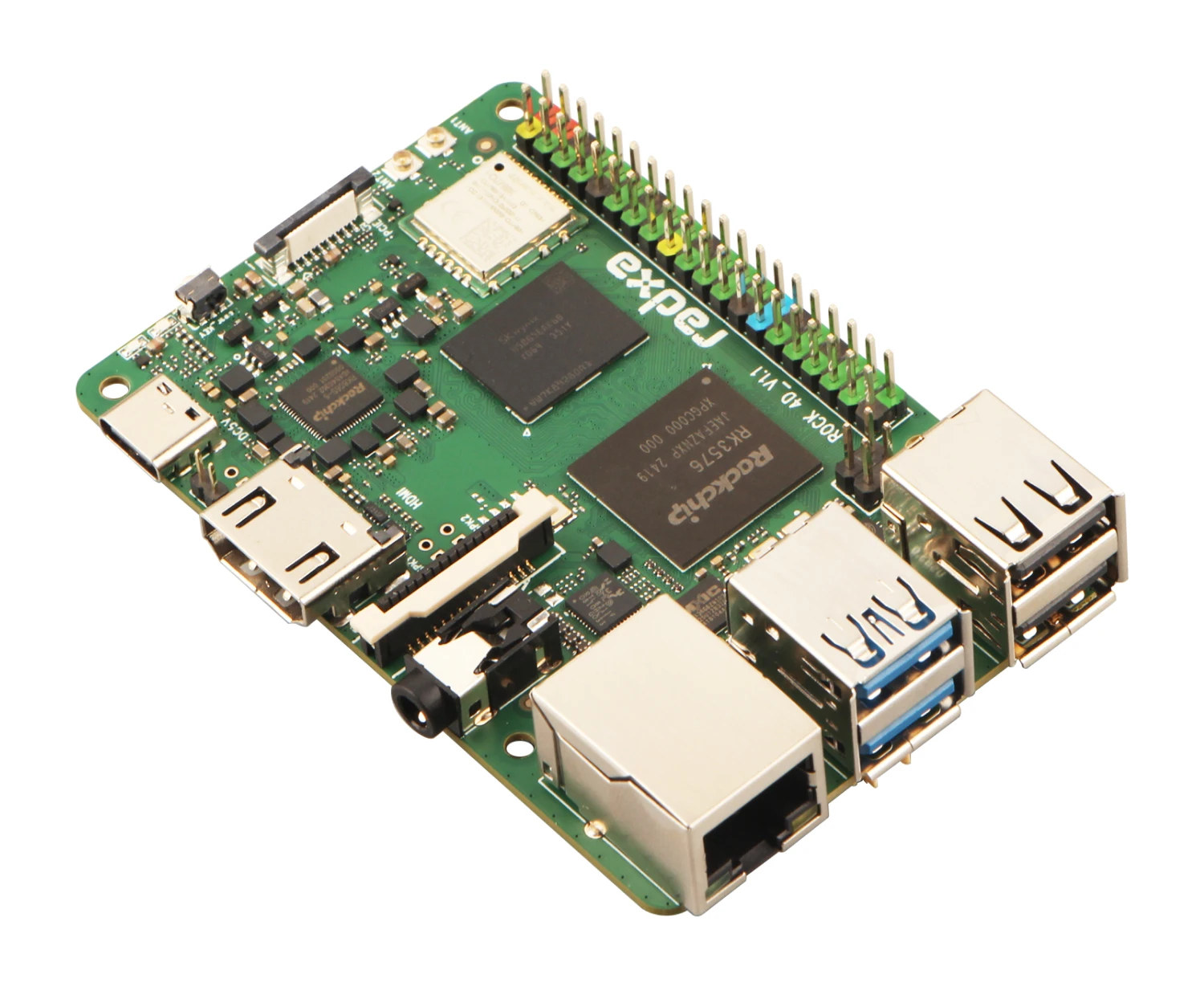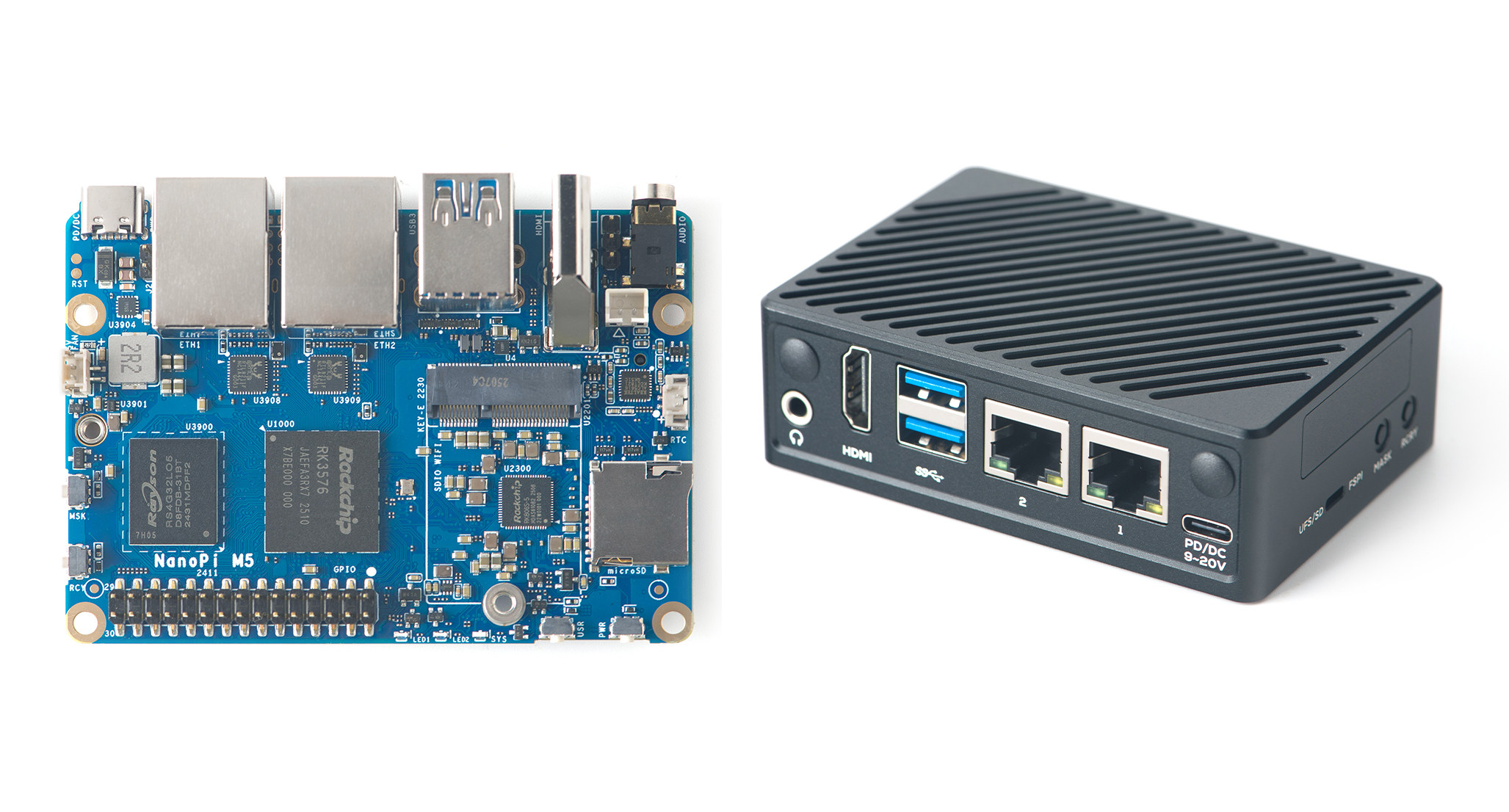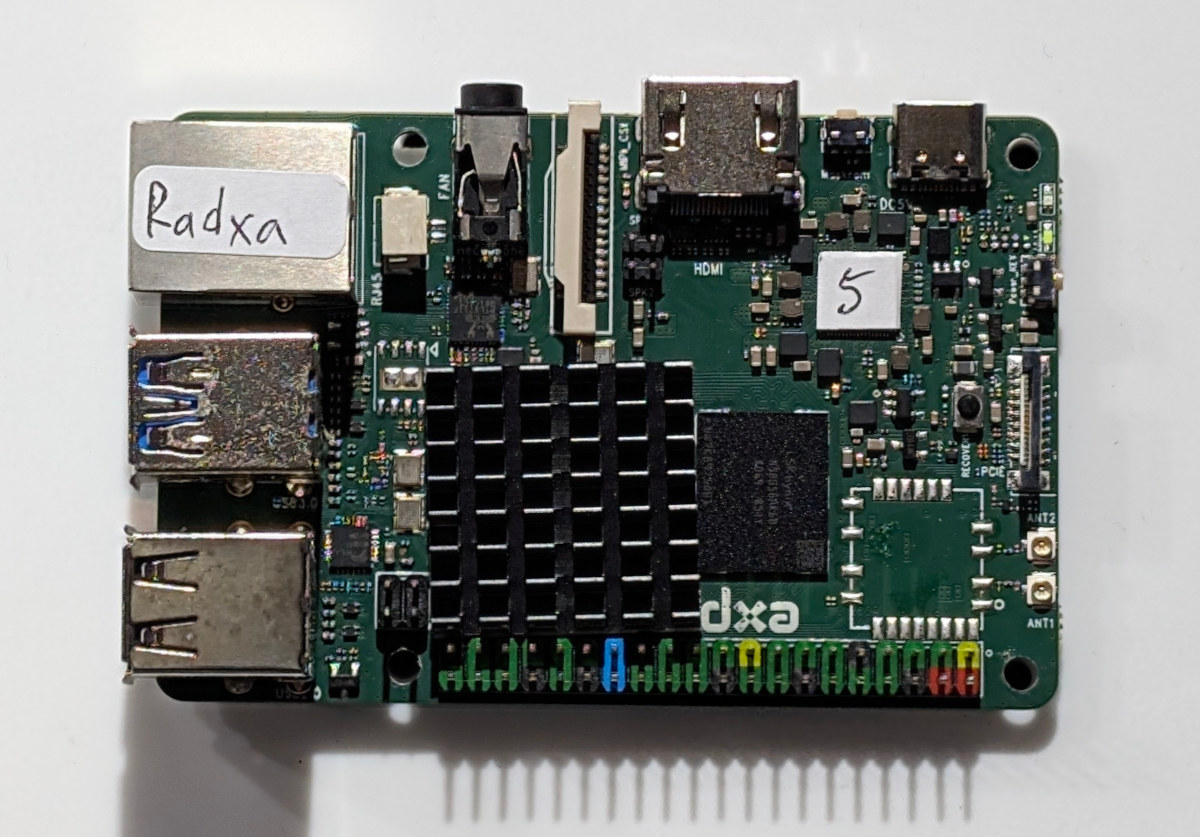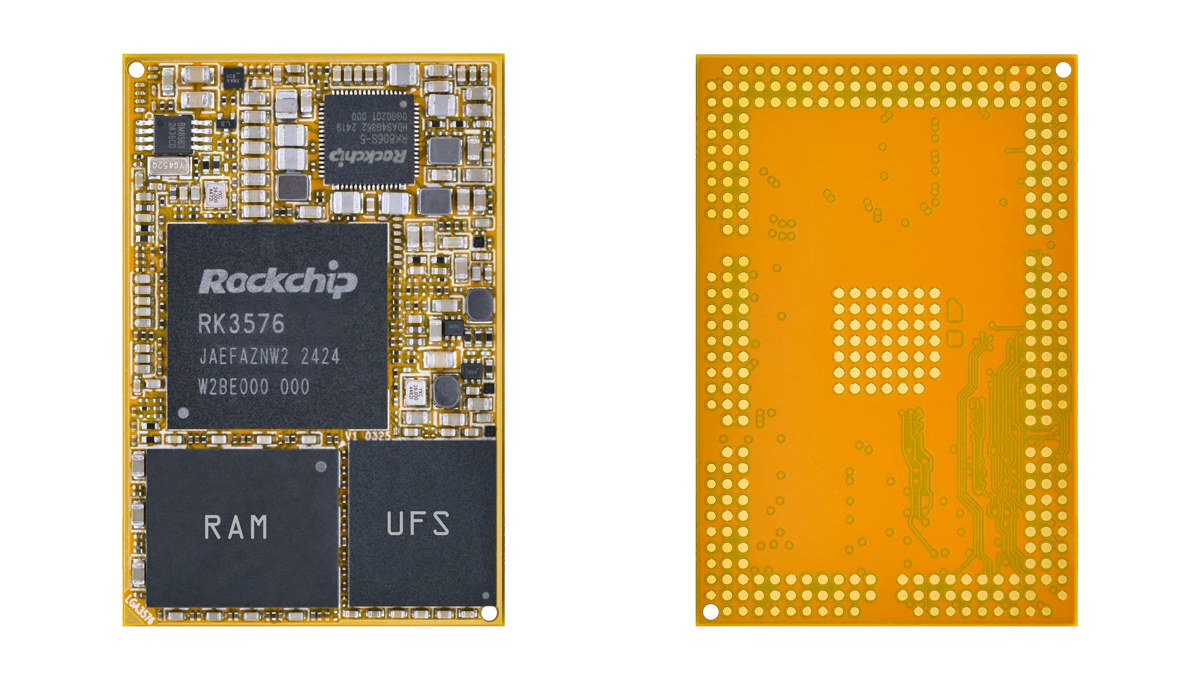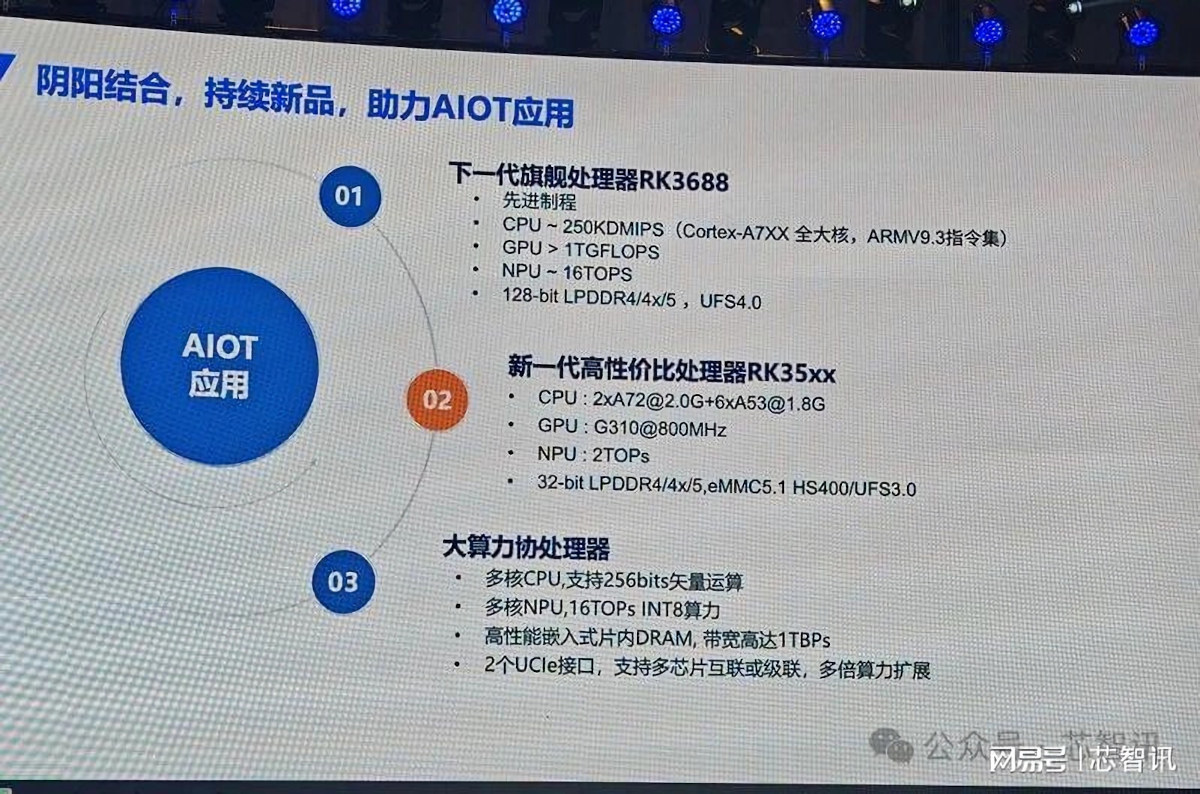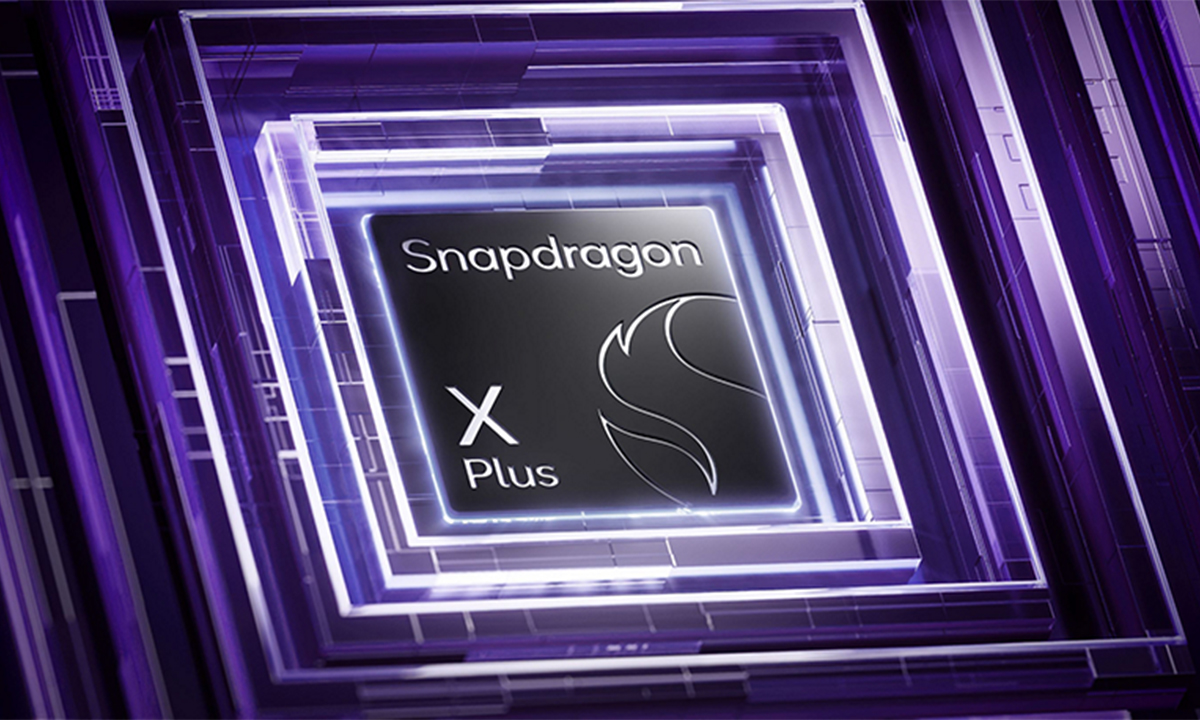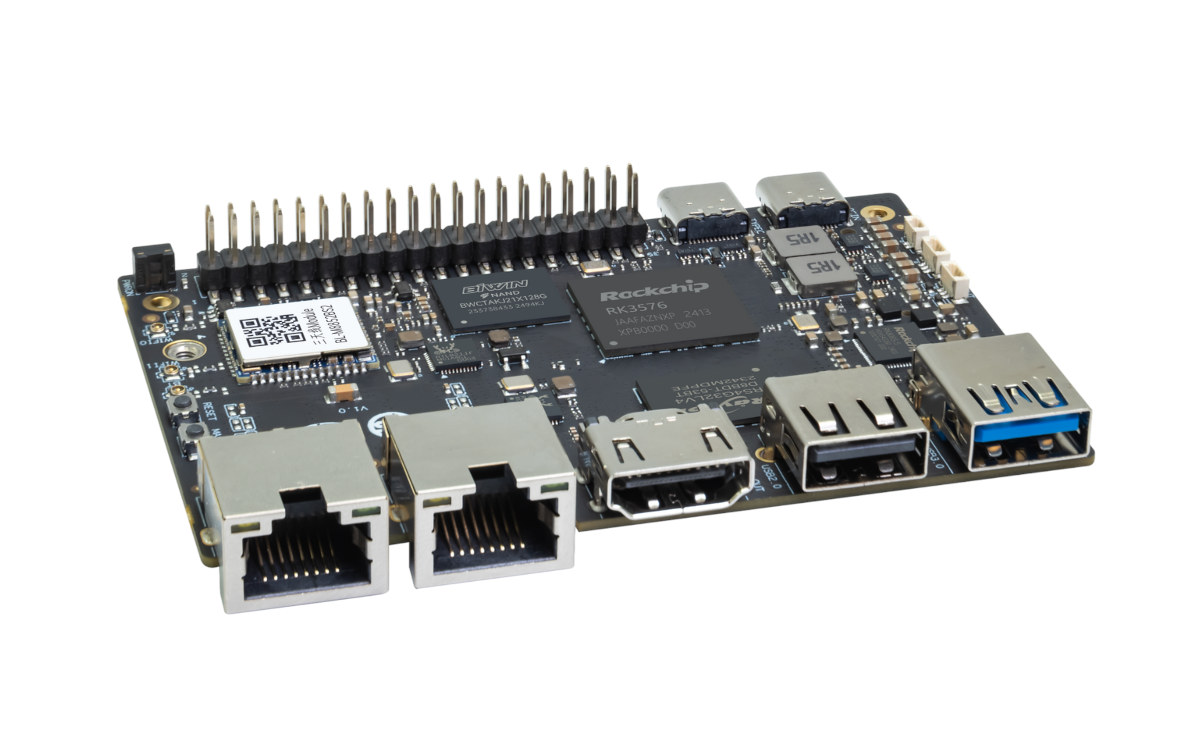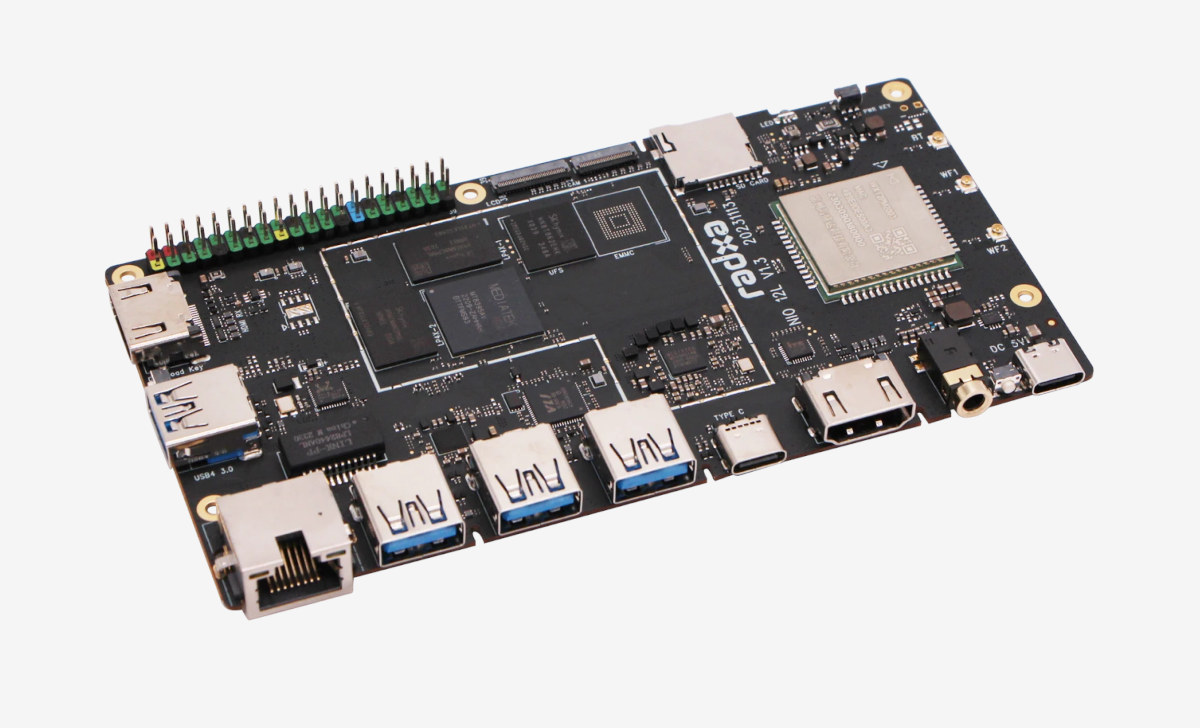Radxa ROCK 4D is yet another Rockchip RK3576 SBC, but offered in a credit card form factor similar to the Raspberry Pi 3 model with the usual 40-pin GPIO header, Gigabit Ethernet ports, and four USB ports. We first noticed it when we covered the Radxa Dual 2.5G Router HAT, and I’ve just seen it added to the Linux 6.15 release, so I thought it might be a good time to cover it, especially since it’s already for sale on Allnet and AliExpress starting at $31 plus shipping. Radxa ROCK 4D specifications: SoC – Rockchip RK3576 or RK3576J (industrial-grade version) CPU – Octa-core CPU with 4x Cortex-A72 cores at 2.2 GHz, 4x Cortex-A53 cores at 2.0 GHz GPU – Arm Mali-G52 MC3 GPU with support for OpenGL ES 1.1, 2.0, and 3.2, OpenCL 2.0, and Vulkan 1.2 NPU – 6 TOPS (INT8) AI accelerator with support for INT4, INT8, INT16, […]
NanoPi M5 – A Rockchip RK3576 SBC with HDMI, dual GbE, M.2 NVMe and SDIO WiFi sockets, UFS 2.0 storage support
It feels like everybody is now launching hardware based on the Rockchip RK3576 SoC, the little brother of the RK3588 with Cortex-A72/A53 cores instead of Cortex-A76/A55 cores, 4K video output, and a mid-range Mali-G52 GPU, while keeping most of the same interfaces. FriendlyELEC has now joined the fray with the NanoPi M5 SBC equipped with up to 4GB LPDDR4x or 16GB LPDDR5, sockets for a UFS module and an M.2 NVMe SSD, HDMI 2.0 and MIPI DSI display interfaces, two MIPI CSI camera connectors, two gigabit Ethernet ports, a 3.5mm audio jack, two USB 3.0 ports, a 30-pin GPIO header, and more. NanoPi M5 specifications: SoC – Rockchip RK3576 CPU – Octa-core CPU with 4x Cortex-A72 cores at 2.2 GHz, 4x Cortex-A53 cores at 2.0 GHz GPU – Arm Mali-G52 MC3 GPU with support for OpenGL ES 1.1, 2.0, and 3.2, OpenCL 2.0, and Vulkan 1.2 NPU – 6 TOPS […]
Radxa NIO 5A credit card-sized Mediatek Genio 520 SBC showcased at Computex 2025
Radxa NIO 5A is an upcoming Mediatek Genio 520 SBC in credit card/Raspberry Pi form factor that should offer a more affordable entry into the MediaTek Genio family than Radxa Nio 12L equipped with a powerful Mediatek Genio 1200 SoC. There’s no public information on the web about it, but I was sent some photos of the board from Mediatek’s booth at Computex 2025, and we know it’s powered by the Genio 520 octa-core Cortex-A78/A55 SoC with a 10 TOPS AI accelerator and comes with “large memory and high-capacity storage”. Let’s see if we can derive more detailed specs from the photos and other public information about the SoC. Radxa NIO 5A specifications (preliminary): SoC – Mediatek Genio 520 (MT8371) CPU – Octa-core processor with 2x Arm Cortex-A78 up to 2.2 GHz (Commercial) or 2.0 GHz (Industrial) 6x Arm Cortex-A55 up to 2.0 GHz (Commercial) or 1.8 GHz (Industrial) GPU […]
Boardcon LGA3576 – A Rockchip RK3576 LGA system-on-module with UFS storage and LPDDR5 memory
Boardcon has just introduced the LGA3576 system-on-module with a 330-pad LGA design powered by Rockchip RK3576 AI SoC and the Idea3576 single board computer (SBC) based on the module. The 6TOPS AI-capable system-on-module ships with up to 8GB LPDDR5, integrates 32GB to 512GB UFS storage, while an RK806S-5 PMIC takes care of power management, and all I/Os such as HDMI, PCIe, Ethernet, and GPIO signals are exposed through LGA pads. Boardcon LGA3576 – A Rockchip RK3576 LGA system-on-module Specifications: SoC – Rockchip RK3576 CPU Octa-core CPU with 4x Cortex-A72 cores at 2.2GHz, 4x Cortex-A53 cores at 1.8GHz Single-core Cortex-M0 real-time core GPU – Arm Mali-G52 MC3 GPU with support for OpenGL ES 1.1, 2.0, and 3.2, OpenCL up to 2.0, and Vulkan 1.1 NPU – 6 TOPS (INT8) AI accelerator with support for INT4/INT8/INT16/BF16/TF32 mixed operations. VPU Video Decoder H.265, VP9, AV1, and AVS2 up to 8Kp30 or 4Kp120 H.264/AVC up […]
Upcoming Rockchip RK3688 Armv9.3 AIoT processor to feature a 16 TOPS NPU, UFS 4.0 interface
Rockchip has unveiled the RK3688 AIoT SoC with Armv9.3 Cortex-A7xx cores delivering up to 250K DMIPS (RK3588 delivers 93K DMIPS), a 1 TFLOPS GPU, and a 16 TOPS NPU. The new processor succeeds the Rockchip RK3588 octa-core Cortex-A76/A55 first announced in 2019, and also features a 128-bit LPDDR4/4x/5 memory interface, and a UFS 4.0 storage interface. That’s about all we know about the RK3688 right now, but we can also deduct it’s probably based on a new, yet-to-be-announced Arm Cortex-A7xx core, possibly named Cortex-A730 or Cortex-A735, because no Arm cores have been announced with the Armv9.3 architectures. The Arm Cortex-A725 CPU core unveiled last May still relies on Armv9.2, and I’d expect new Arm cores to be introduced within the next few months unless Rockchip made a mistake in the presentation slide above. Two other platforms were also announced at the same time starting with a new entry-level/mid-range RK35XX octa-core […]
Qualcomm Snapdragon X Plus 8-core – A 4 GHz octa-core processor for entry-level Copilot+ PCs and laptops
Qualcomm’s Snapdragon X line of ARM-based processors is designed for Windows laptops, offering CPUs capable of competing with Intel and AMD processors. The Snapdragon X Plus (10 core) and Snapdragon X Elite, announced last year, include high-performance NPUs for AI processing. Qualcomm has now introduced the entry-level Snapdragon X Plus 8-core processor, targeting the $700 to $900 laptop market instead of the ~$1,300+ asked for something like the Microsoft Surface Laptop 15. It reduces CPU and graphics performance while maintaining the same AI features as the higher-end models. The Qualcomm Snapdragon X Plus lineup includes two octa-core processors: the X1P-46-100 and X1P-42-100, both built on a 4nm process. These processors come with eight Oryon CPU cores, clocked at 4GHz and 3.4GHz respectively, and are equipped with the Qualcomm Hexagon NPU, delivering 45 TOPS for AI tasks like Copilot+ PC. They also integrate Qualcomm Adreno GPUs offering 2.1 TFLOPS for the […]
Banana Pi BPI-M5 Pro low-profile SBC features Rockchip RK3576 octa-core Cortex-A72/A53 AIoT SoC
Banana Pi BPI-M5 Pro, also known as Armsom Sige5, is a low-profile single board computer (SBC) powered by the Rockchip RK3576 octa-core Cortex-A72/A53 SoC for the AIoT market that offers a mid-range offering between Rockchip RK3588 and RK3399 SoCs. The board comes with 16GB LPDDR4X and 128GB eMMC flash by default, offers dual GbE, WiFi 6 and Bluetooth 5.2 connectivity, an M.2 2280 PCIe socket for expansion, HDMI and MIPI DSI display interfaces, two MIPI CSI camera interfaces, a few USB ports, and a 40-pin GPIO header. Banana Pi BPI-M5 Pro specifications: SoC – Rockchip RK3576 CPU 4x Cortex-A72 cores @ 2.2GHz, four Cortex-A53 cores @ 1.8GHz Arm Cortex-M0 MCU at 400MHz GPU – ARM Mali-G52 MC3 GPU with support for OpenGL ES 1.1, 2.0, and 3.2, OpenCL up to 2.0, and Vulkan 1.1 NPU – 6 TOPS (INT8) AI accelerator with support for INT4/INT8/INT16/BF16/TF32 mixed operations. VPU Video Decoder: […]
Radxa NIO 12L – A low-profile MediaTek Genio 1200 SBC with Ubuntu certification for at least 5 years of updates
Radxa NIO 12L is a low-profile single board computer (SBC) based on the MediaTek Genio 1200 octa-core Cortex-A78/A55 SoC with a 4 TOPS NPU that got Ubuntu certification with at least 5 years of software update, and up to 10 years for extra payment. The board comes with up to 16GB RAM, 512GB UFS storage, HDMI, USB-C (DisplayPort), and MIPI DSI video interfaces, a 4K-capable HDMI input port, two MIPI CSI camera interfaces, gigabit Ethernet and WiFi 6 connectivity, five USB ports, and a 40-pin GPIO header for expansion. Radxa NIO 12L specifications: SoC – Mediatek Genio 1200 (MT8395) CPU Quad-core Arm Cortex-A78 @ up to 2.2 to 2.4GHz Quad-core Arm Cortex-A55 @ up to 2.0GHz GPU Arm Mali-G57 MC5 GPU with support for OpenGL ES1.1, ES2.0, and ES3.2, OpenCL 1.1, 1.2 and 2.2, Vulkan 1.1 and 1.2 2D image acceleration module APU – Dual‑core AI Processor Unit (APU) Cadence […]


